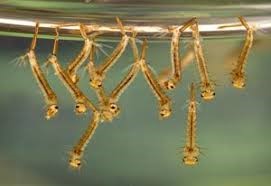Larvicidal potential of Khaya senegalensis seed oil against Dermestes maculatus Degeer
DOI:
https://doi.org/10.26538/tjdr/v2i4.2Keywords:
Repellency, Larvicidal, Smoke-dried fish, Dermestes Larvae, MortalityAbstract
Purpose: Fishes are highly vulnerable to insect pest attacks during processing and storage resulting in physical, financial, and nutritional losses from these infestations. The prevailing tropical climate's humidity encourages the infestation of dermestids. Hence, post-harvest losses due to Dermestes maculatus infestation pose a significant challenge in the preservation of smoked-dried fish, necessitating alternative pest control strategies. The study focused on the examination of the insecticidal potential of Khaya senegalensis seed oil against the larvae of the hide beetle, Dermestes maculatus on smoked-dried African mud catfish, Clarias gariepinus.
Methods: Oil was extracted from pulverized seeds of Khaya senegalensis using n-hexane by Soxhlet method. The Refractive index, Specific gravity, Acid, Iodine, Peroxide, and Saponification values of the oil were determined by Standard Methods. Parameters assessed were repellency and larval mortality at 24, 48, 72, and 96 hour exposure time. The doses of the seed oil administered were 0.003mLg-1, 0.009mLg-1, 0.027mLg-1, 0.081mLg-1, and 0.243mLg-1. Thirty late (5th) instar larvae of D. maculatus were exposed to each of the treated fish in triplicate including a control devoid of oil treatment.
Results: The repellent activity of the oil was dose-dependent, with significant repellency observed at concentrations of 0.081 mLg⁻¹ and 0.243 mLg⁻¹. Mortality rates of D. maculatus larvae increased with oil concentration and exposure duration, with up to 85% mortality recorded at the highest dose after 96 hours (p<0.05).
Conclusion: This findings suggest that K. senegalensis seed oil has strong potential as a sustainable, plant-based insecticide for protecting stored fish products. Further research should focus on isolating active compounds and assessing field applications.
Downloads
References
1. Akpotu, O.J., Oniye, S.J., Abolude, D. and Yusuf, A. Comparative study of the toxicity of oils from seeds of citrullus colocynthis and citrullus vulgaris on larvae of Dermestes maculatus. J Aqua Engr Fishr Res. 2017; 3(1): 6-12.
2. Anonymous. Manual of Methods of Analysis of Food: Oils and Fats (Lab. Manual 2). Food Safety and Standards Authority of India, New Delhi, India. 2012; 110pp.
3. AOAC. Official method of analysis, 16th edition. Association of Analytical Chemists, Arlington, VA. 1998; 4: 1-45.
4. Aremu, M. O., Ibrahim, H. and Bamidele, T. O. Physicochemical Characteristics of the Oils Extracted from Some Nigerian Plant Foods – A Review. Chem and Pro Engr Res. 2015; 32: 36-52.
5. Awoyemi, M.D. Insect Infestation of Dried Fish in the Kainji Lake Area.National Institute for Freshwater Fisheries Research, 1988 Annual Report, New Bussa. 1989; pp5 – 12.
6. Babarinde, S.A., Sunnie-Ododo, M.O., Akanbi, W.B., Oyegoke, O.O., Tijani, R. and Olaobaju, S.F. Comparative susceptibility of two developmental stages of hide beetle (Dermestes maculatus Degeer, 1774) to ginger (Zingiber officinale Roscoe) essential oil. J Saudi Soc Agric Sci. 2016; 17(4): 385-389.
7. Don-Pedro K.N. Mechanism of action of some vegetable oils against Sitophilus zeamais Motsch. (Coleoptera: Curculionidae) on wheat. J Stor Pro Res. 1989; 25:217-223.
8. Emmanuel I. Ogban. Insecticidal value of four vegetable oils against Dermestes maculatus Degeer on smoked African mud catfish, Clarias gariepinus Burchell. J Entomol Zool Stud. 2019; 7(3): 563-568.
9. Falodun, A. and Osahon, O. Phytochemical Screening and Evaluation of Stem Bark Extract of Khaya senegalensis (Meliaceae) On Methicillin Resistant Staphyloccocus Areus. Canadian J of Pure and Appl Sci. 2009; 3(3): 925-928.
10. Falodun A. Herbal Medicine in Africa-Distribution, Standardization and Prospects. Res J Phytochem. 2010; 4: 154-161.
11. Haines, C.P. Insects and Arachnids of tropical stored products: Their biology and Identification: A Training Manual. 2nd Edn., Natural Resources Institute, UK. 1991.
12. Johnson, C. and Esser, J. A Review of Insect Infestation of Traditionally Cured Fish in the Tropics. Department for International Development, London; 2000. 92pp.
13. Keerthana PS, Soorya Gopan, Rubeena Rajabudeen, Rinu Fathima, Kavya Shibu, Nisha R, Pooja Udayan, Teena Elvis, Gifty T, Arun Das NH, Dinesh K, Safeena MP and Sreekanth GB. Post-harvest losses in the fisheries sector- facts, figures, challenges, and strategies. Intl J Fishr Aqua Stud. 2022; 10(4): 101-108.
14. SON. Standard Organization of Nigeria. Standards for Edible Refined Palm Oil and Its Processed Form; 2000. pp. 2–5.
15. Nasiru, A., Suleiman, M. and Abdulkarim, B. (2022). Bioefficacy of the essential oil of Thymus vulgaris against Dermestes maculatus Degeer 1774 (Coleoptera: Dermestidae) infesting smoke-dried Clarias gariepinus 1822. The Biosci. 2022; 10(3): 270-279.
16. Nerio, L.S., Olivero-Verbel, J. and Stashenko, E. Repellent activity of essential oils: a review. Biores Tech. 2010; 101: 372–378.
17. Nta, A.I., Andem, A.B., Okererke, C.I. and Odey, C.O. Bio-efficacy of some plant oil extracts as surface protectant against leather beetle, Dermestes maculatus (Degeer) on smoked fish of Clarias gariepinus. J Entomol Zool Stud. 2019; 7(3): 51-56.
18. Obeng-Ofori D. Plant oils grain protectants against infestation of Cryptolestes pusillus and Rhyzopertha dominica in stored grain. Entomol Exp et Appli. 1995; 77:133-139.
19. Tang, X., Olatunji, O.J., Zhou, Y., Hou, X. In vitro and in vivo aphrodisiac properties of the seed extract from Allium tuberosum on corpus cavernosum smooth muscle relaxation and sexual behavior parameters in male Wistar rats. BMC Complement Altern Med. 2017; 17(1): 510.
20. Osuji, F.N.C. Comparative studies on the susceptibilities of different genera of dried fish to infestation by Dermestes maculatus and Necrobia rufipes. Nig J Entomol. 1974; 1(1): 63 – 68.
21. Melo, E., Michels, F., Arakaki, D., Lima, N., Gonçalves, D., Caval- heiro, L., Nascimento, V. First Study on the Oxidative Sta- bility and Elemental Analysis of Babassu (Attalea speciosa) Edible Oil Produced in Brazil Using a Domestic Extraction Machine. Molecules. 2019; 24(23): 4235.
22. Habibu Tijjani, Salima A. Sada, Oluremi A. Saliu, Suwaiba Nasir, Ayodeji O. Idowu, Blessing Edogbo, Bartholomew Odaudu, Uzaifa M. Adam and Shehu U. Adamu. GCMS analysis and larvicidal activity of Luffa cylindrical leaf extracts against mosquito larvae from Wassa Internally Displaced Person Camp, Abuja, Nigeria. Trop J Drug Res. 2024; 1(1): 1 -8.

Downloads
Published
Issue
Section
License

This work is licensed under a Creative Commons Attribution-NonCommercial-ShareAlike 4.0 International License.




